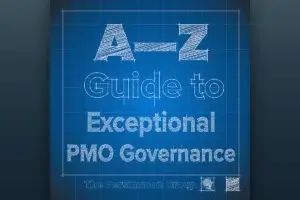Traditional SMART goals might be holding your organization back from a breakthrough performance. Here’s how savvy leaders are evolving this framework to inspire real achievement rather than mere compliance.
SMART goals—an acronym standing for specific, measurable, achievable, realistic, and time-bound—have dominated corporate strategy for four decades. First introduced by consultant George T. Doran in a 1981 Management Review article, the framework was meant as a flexible guide. But over time, it’s hardened into dogma that might be quietly undermining the very excellence it was designed to create—limiting ambition, stifling creativity, and even encouraging counterproductive behaviors.
Harvard Business School researchers found that overemphasizing goal specificity can lead employees to neglect important but unmeasured aspects of their work, resulting in tunnel vision that undermines overall performance. Worse, when goals become rigid benchmarks rather than adaptable guideposts, teams may prioritize short-term wins at the expense of long-term success—even engaging in unethical behavior to meet narrowly defined targets.
At the same time, studies on motivation suggest that employees perform at their best, not when they’re chasing a checklist, but when they feel they’re making meaningful progress toward something that matters. When Harvard Business School professor Teresa Amabile and researcher Steven Kramer examined 12,000 diary entries from employees in their book The Progress Principle, they found that meaningful progress was the strongest motivator—not external tracking mechanisms. And, when it comes to knowledge work, these researchers found that SMART goals are often no more effective than “do-your-best” goals or non-specific, exploratory ‘open goals.’
Consider the last major initiative in your organization that fell short despite careful planning. The problem wasn’t likely a lack of structure, but rather the absence of inspiration that transcends checkboxes. Here are six critical SMART goal mistakes that might be sabotaging your results—and how to fix them:
Mistake #1: Using SMART Goals as Primary Motivation
When Metrics Replace Meaning
The frameworks we use shape how we think. When leaders focus first on making goals measurable and realistic, they inadvertently diminish the emotional resonance that fuels extraordinary effort.
Imagine a healthcare system that needs to improve patient satisfaction. The conventional SMART goal approach might set targets like “increase patient satisfaction scores by 8% within 12 months.” While specific and measurable, this target often leads to narrow tactics focused on the survey itself rather than meaningful patient experiences.
Contrast this with starting from the outcome: “We want to become the healthcare provider that patients trust so deeply they wouldn’t consider going anywhere else.” From this north star, leaders can then develop adaptive SMART goals that serve as waypoints: improving nurse response times, reducing administrative friction, and enhancing communication clarity. The key difference is that these specific metrics serve the inspiring outcome rather than replacing it.
The most effective SMART goals serve as waypoints toward an inspiring destination, not as the destination itself.
The Fix: Start With Purpose, Not Metrics
Before crafting specific targets, articulate what success truly looks like for your organization—the destination that makes the journey worthwhile. Ask: “If we succeed, what difference will it make?” Only then work backward to establish SMART goals as flexible waypoints, not endpoints.
For example, rather than setting a generic target like “reduce customer complaints by 15% this quarter,” begin with: “We transform customer problems into opportunities for deeper loyalty.” This outcome-first approach creates an emotional resonance that inspires teams to go beyond mere compliance.
Bottom Line: Define the meaningful outcome first, then create SMART goals that serve as milestones toward that inspiring destination.
Mistake #2: Forcing Measurement Where Wisdom Belongs
When Numbers Obscure Insight
In our experience working with senior executives, their most significant achievements often defy simple metrics. When asked about their proudest accomplishments, leaders consistently mention outcomes like building cohesive teams, transforming organizational cultures, or developing innovative approaches to persistent challenges—none of which can be adequately captured by a specific, realistic, time-bound number.
This challenge isn’t new. Even the framework’s creator understood its limitations. Doran himself wrote in his original 1981 paper that “the suggested acronym doesn’t mean that every written objective will have all five criteria.” Yet despite this early caution, organizations routinely force quantification onto inherently qualitative outcomes, often at the expense of what matters most.
A financial services leader working to increase innovation might set a goal of “generate 25 new product ideas per quarter,” inadvertently encouraging quantity over quality. The executive who measures “team psychological safety” with a 10-point scale misses the nuanced daily behaviors that actually create that condition.
A goal should be an indicator of progress. While it should be observable enough to know when it’s met, it doesn’t have to be reduced to a single number, percentage, or “yes/no” answer. Many of the most important organizational objectives simply cannot be captured in a neat numerical package. In fact, aggregating data into a single number often stifles valuable discussions about nuance and context—obscuring critical insights like “we exceeded expectations with this customer segment” while “we fell short with that one.”
Perhaps most importantly, excessive focus on metrics can replace rich storytelling with sterile numbers. When leaders hear directly from teams about specific customer interactions, frustration points, or unexpected breakthroughs, they gain insights that no dashboard can provide. These stories—with their emotional resonance and contextual detail—often drive more meaningful organizational change than even the most sophisticated aggregated data.
The Fix: Seek Evidence, Not Just Metrics
Instead of asking, “What should we measure?” ask, “How will we know?” If your objective is turning customer problems into opportunities for deeper loyalty, decide what evidence would convince you of success. What will you hear customers say? What behaviors will you observe? Can quantitative data capture this, or do you need to establish rituals that bring human experience into goal reviews?
These rituals might include dedicating time to leadership meetings to discuss surprising insights or customer stories that reveal what’s truly driving deeper loyalty.
Bottom Line: Not everything that matters can be measured, and not everything that can be measured matters. Establish both quantitative metrics and qualitative evidence of progress.
Mistake #3: Failing to Balance Short-Term and Long-Term Goals
When Timeframes Don’t Connect
One of the most common goal-setting failures we observe in organizations is the imbalance between immediate targets and future aspirations. Most teams gravitate toward one extreme or the other: either focusing exclusively on quarterly objectives or setting grand visions without clear pathways to achievement.
This imbalance creates predictable problems. An exclusive focus on short-term goals encourages tactical thinking but fails to build momentum toward meaningful change. Teams become masters of the urgent while neglecting the important. Conversely, distant goals without proximal targets often feel abstract and fail to drive immediate action, creating a sense of perpetually chasing the horizon.
Teams with only short-term goals master the urgent while neglecting the important. Teams with only long-term aspirations chase horizons that never seem to get closer.
Consider a technology company aiming to “become the industry leader in customer experience by 2025.” Without quarterly targets for specific experience improvements, this aspiration remains merely wishful thinking. Likewise, a team focused exclusively on “increasing this month’s sales by 12%” without connecting to a larger purpose risks burning out top performers who crave meaningful impact beyond the next quota.
The Fix: Create a Goal Ecosystem
Create a goal ecosystem that connects daily actions to transformational outcomes:
- Start by defining your desired end-state (the outcome that matters)
- Assess your current position relative to that definition of success
- Set interconnected goals with varied timeframes—90-day sprints, quarterly objectives, and annual milestones—that bridge the gap between current reality and desired end-state
For example, a professional services firm might set a long-term goal of “becoming the employer of choice for top industry talent by 2025,” supported by quarterly goals focused on specific aspects of the employee experience, manager development, and compensation structure.
Mistake #4: Overemphasizing Performance Goals vs. Learning Goals
When Results Overshadow Discovery
There are two types of goals: performance goals and learning (or process) goals. Performance goals focus on getting the desired end result, like running a four-minute mile. A learning goal, on the other hand, focuses on acquiring knowledge or a new skill.
Using the running example above, a learning goal might be to lengthen your running stride or increase steps per minute. These goals focus on learning more effective ways to do something.
Research demonstrates that in most cases, learning goals are associated with much higher goal attainment. This is because with learning goals, the focus is on the discovery of effective strategies or processes to attain the desired results. It forces near-constant attention to what is working…and what isn’t.
Real-World Application
Consider the case of a retail chain struggling with inconsistent customer service across locations. A performance goal might be “increase customer satisfaction scores by 15% within six months.” While clear and measurable, this approach doesn’t guide teams on how to achieve that result, especially if they lack the necessary capabilities.
A learning goal approach would instead focus on discovering and developing effective practices: “Identify the three most impactful service behaviors from our top-performing stores and implement a training program to develop these skills across all locations.” This frames the challenge as a process of discovery and capability building rather than just hitting a number.
The Fix: Balance Performance and Learning
For complex challenges where the path forward isn’t clear, emphasize learning goals over performance goals. These goals should focus on developing new capabilities, testing assumptions, or acquiring critical knowledge. Once effective strategies emerge, shift toward performance goals to drive execution.
For example, instead of setting an immediate performance goal to “reduce customer churn by 12% this quarter,” start with learning goals: “Discover the primary drivers of dissatisfaction with our last 20 churned customers” or “Test three different retention approaches with at-risk segments to determine the most effective intervention.”
Bottom Line: When facing complex challenges, set learning goals to discover effective strategies before establishing performance targets.
Mistake #5: Setting Goals That Are Too “Realistic and Achievable”
When Playing It Safe Becomes Risky
The “achievable” and “realistic” elements of SMART goals often lead to uninspiring targets that fail to energize teams. Research by leadership development firm Leadership IQ found that people who set difficult goals are 34% more likely to love their jobs—yet less than half of interviewed participants indicated that they set goals that others would describe as difficult or audacious.
This widespread aversion to ambitious goals creates a ceiling on what organizations can accomplish. When leaders prioritize certainty of achievement over potential for breakthrough, they inadvertently signal that playing it safe matters more than pursuing excellence. Teams quickly learn to propose conservative targets they know they can hit rather than aspirational outcomes that might drive exceptional performance.
The Fix: Incorporate Moonshot Thinking
Incorporate regular “moonshot thinking” into your goal-setting process by asking: “If we were to increase our ambition tenfold, what would change about our approach?” While not every goal should be a moonshot, at least some of your objectives should push boundaries and challenge assumptions.
For instance, rather than “improve customer onboarding completion rates by 10%,” consider “reimagine customer onboarding to feel effortless while cutting time-to-value in half.” The latter demands creative solutions beyond tweaking the existing process—exactly the kind of thinking that leads to breakthrough results.
When setting these stretch goals, emphasize learning and experimentation rather than perfection. The aim isn’t necessarily to achieve the ambitious target in its entirety, but to stimulate the innovative thinking and heightened effort that drives exceptional performance. A team that reaches 80% of an audacious goal often accomplishes more than one that achieves 100% of a modest one.
Bottom Line: Include at least one stretch goal that demands rethinking assumptions rather than optimizing current approaches.
Mistake #6: Refusing to Change Course When Context Shifts
Perhaps the most damaging SMART goal mistake is treating goals as fixed commitments rather than adaptable hypotheses. In today’s volatile business environment, circumstances can shift dramatically in a matter of weeks, rendering carefully crafted goals suddenly irrelevant or even counterproductive.
Yet many organizations continue with performance management cycles that lock in goals for 6-12 months, creating misalignment between incentives and evolving business needs. Teams find themselves pursuing objectives that no longer serve the organization simply because they were documented in January—and no formal mechanism exists to reconsider their relevance in June.
The pandemic dramatically illustrated this problem when companies with rigid planning cycles struggled to adapt while those with more flexible goal frameworks pivoted quickly to meet changing customer needs. Organizations that thrived were those that recognized shifting circumstances as an opportunity to rethink not just tactics, but fundamental objectives.
In volatile environments, treating goals as hypotheses rather than promises enables organizations to adapt without sacrificing accountability.
This doesn’t mean goals should be abandoned at the first sign of difficulty—commitment and perseverance remain essential virtues. But there’s a crucial difference between persisting toward meaningful outcomes despite obstacles and dogmatically pursuing targets that changing conditions have rendered obsolete.
The Fix: Establish Regular Goal Audits
Institute regular “goal checkpoints” where teams explicitly reconsider whether each objective remains the best focus given the current context. These should be authentic discussions, not perfunctory reviews, with clear permission to adapt or even abandon goals that no longer serve the broader purpose.
For example, a marketing team might set a 90-day goal to “increase webinar registration by 30%” but discover midway through that webinar attendance and conversion rates are declining. Rather than pursuing a now-questionable target, they might pivot to “test three alternative lead generation channels and establish performance benchmarks,” better serving the underlying objective of acquiring quality leads.
Bottom Line: Create formal mechanisms to regularly reassess goals in light of changing conditions and emerging information.
The Bottom Line: From Compliance to Breakthrough
The SMART framework isn’t inherently flawed—it simply requires thoughtful application. Properly used, it provides clarity that drives meaningful progress. But when allowed to calcify into rigid orthodoxy, it can quietly undermine the very performance it aims to enhance.
The solution isn’t abandoning structure but rather evolving how we think about goals: as flexible instruments in service of inspiring outcomes, not as ends in themselves. By addressing these six critical mistakes, leaders can transform SMART goals from compliance mechanisms into catalysts for exceptional performance.
For organizations eager to maximize results, the message is clear: goals should liberate human potential, not constrain it. They should focus their attention without narrowing possibilities. And most importantly, they should connect daily efforts to purposes worth pursuing—the true foundation of sustained excellence.









